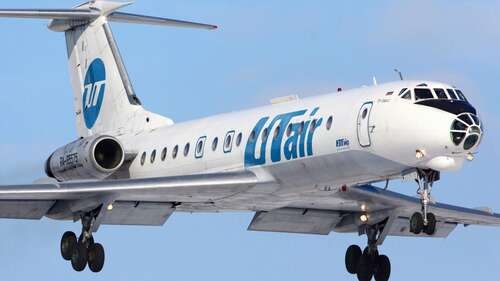
The Tu-134 was designed in the 1960s by Tupolev, the same Russian aerospace company responsible for the supersonic passenger jet Tu-144. The creation of this plane was ordered by the Soviet leader at the time, Nikita Khrushchev, who was impressed after taking a trip on a Caravelle, a plane created by French aeronautics company Sud Aviation. The highlight was the rear-mounted jet turbines, which reduced the noise level for those in the cabin. The Tu-134 was made a bit more distinctive from its rear-engine contemporaries thanks to its exceptionally large T-tail, which helped keep the rear stabilizer clear of engine exhaust.
The Tu-134 began commercial rollout in 1967, taking its first international flight from Moscow to Stockholm under the banner of Soviet air carrier Aeroflot. It was the very first Soviet airliner to receive international certification, which also earned it the NATO reporting name of “Crusty.”
The original version of the Tu-134 could seat 72 passengers in a single class, operating at a maximum takeoff weight of 98,105 pounds and cruising at a maximum of 900km/h. Later versions of the Tu-134, including the Tu-134A and Tu-134B, would increase the vehicle’s maximum weight, allowing them to seat up to 84 and 96 passengers, respectively.

